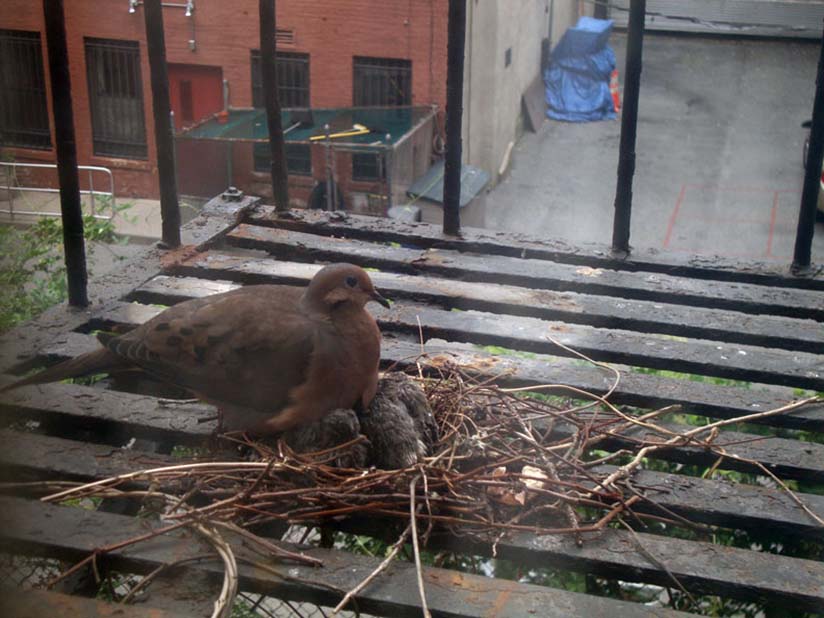Yep, it’s Earth Day. Again. Or Earth Week, judging from the plethora of announcements and invitations that have come in. There are all kinds of reasons a curmudgeon can question the validity of this occasion, ranging from criticizing the idea of “honoring” the Earth for just this short period of time each year, to questioning what can sometimes appear to be the commercialization, perhaps the corporatization, of that occasion. In between, one can wonder about the effectiveness and impact it has had on this, its 43rd, occurrence.

I – the supposed EcoOptimist – am skipping virtually all the festivities: the tree plantings, the film screenings, the organic foodfests and the rest. And while that probably does make me at least a part-time member of the aforementioned curmudgeons, there is in fact an EcoOptimistic silver lining in that I’m spending this time thinking long and hard about nature.
The pondering is due to a presentation I’m giving at a conference in a few days in Mexico City. I’m not sure if this conference, called the “2nd Sustainable Design and Building Encounter” (which, I suspect, sounds better in its original Spanish) is intentionally scheduled during Earth Week or not. Its theme this year is “Rebuilding Paradise: towards the ideal city of the 21st century” and it appears to take as its starting point the view that cities are “characterized by nature’s degradation and species annihilation.”
Few would question that our dense habitations are artificial encroachments on the natural landscape, and that we have pushed aside, bulldozed, what once were virgin ecosystems, existing happily or at least sustainably without our intrusions. But are the things we build – the “modifications” to “physical geography” as one of the first ecologists put it in 1864 – unnatural? Does the fact that they are built by people automatically mean they are not a part of nature?
In one of the courses I created and teach at Parsons, “Economics and Ethics of Sustainable Design,” we spend some of the first few weeks discussing the relationship between humanity and nature and analyzing the fundamental question of whether there is a separation between the two – an “us and them” – or whether we are a part of nature, a subset of the whole. The question touches on religion (paganism and animism vs Christianity) as well as science (atomism vs systems thinking) and law (do animals – or all of nature, for that matter — have rights?).
There are many environmental implications within the answer to this question: seemingly basic ones like whether it is ethical to eat meat and more complicated ones such as whether it is our “right” to take from nature’s resources without limit. The more relevant point for my upcoming talk concerns, I guess, the nature of nature. More specifically, if the conclusion, as most environmentalists would probably agree, is that we are part of nature, not a separate group, then it stands to reason that our creations – buildings, cars, salad spinners, and all – are not “unnatural.” To say our cities are unnatural and therefore lacking in nature, is akin to saying a beehive or an ant hill is unnatural.
That isn’t an argument that our urban scapes have a sufficient amount of non-human living organisms. It is, though, a way to look at the biodiversity of urban ecosystems. With this definition of nature, we can say that cities are too populated and dominated by humans, and that other species of life are underrepresented, resulting in ecosystems that are both unsustainable in an ecological sense and probably unhealthy for humans in a biophilic sense.
Biophilia, in case you are unfamiliar with the term, is our innate need to bond with other living systems. As a long time urban denizen who rarely feels the need to venture beyond the wildlife of the subway (a treehugger who doesn’t actually want to hug trees) and whose home includes no living organisms aside from two humans and a dog, I’ve long questioned the strength of that need.
I do derive loads of pleasure (and probably much lowering of blood pressure) from the hours of petting my dog. However, I don’t feel imprisoned by the city; I don’t feel deprived when not exposed to enough flowers or farms (or mosquitoes or poison ivy).
Yes, there are studies showing that hospital patients recuperate faster when they views from their rooms. And a recent report, The Economics of Biophilia, found that there are substantial benefits in health and productivity from biophilic design. There’s no doubt, even in my urban-centric mind, that more sunlight and exposure to non-human nature would be beneficial to those of us who live or work in dense city centers. It would also provide us with a greater connection to aspects of nature that we are so dependent on but which are unseen and often therefore unappreciated. How many New Yorker’s have ever visited the upstate lakes and reservoirs that serve us water that’s healthier than most bottled waters? Do they even know where their tap water comes from?
I’m probably more aware than most, due to exploring topics like this, of the dependency of cities on their surrounding environs. (Let’s not forget, by the way, that this is really an interdependency, working both ways – as, in fact, all ecosystems do.) But is it critical for me to visit and interact with our watershed, to experience harvesting my food, or hear nothing but birds and my footsteps while hiking? Personally, I don’t feel that need, and I can still both feel fulfilled and have an appreciation for the ecological diversity that makes my Manhattan existence possible. But I also know that I am probably not normal in that respect. (I can virtually hear the exclamations of my more outdoorsy friends.) I’m the one singing the refrain “New York is where I’d rather stay. I get allergic smelling hay.” So I don’t disagree with the common view that we need more views, or that cities could and should be more self-sustaining ecosystems.
But I don’t think cities or urban living are unnatural. No more unnatural than we are. Over half the human population now lives in cities, and that trend will only continue. The question I hope to address at the conference – as well as hear from others about – is how we best combine the human and non-human forms of nature to create cities that are both sustainable ecosystems and fulfilling places to live and flourish.


